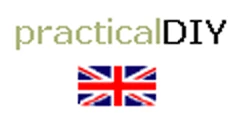Timber floor finishes
Timber floor finishes fall into 2 basic categories, those which provide a protective coating on the surface and those which penetrate (or soak into) the surface.
- Varnishes, lacquers and paints provide protective surface coatings.
- Oils provide penetrative finishes.
- Waxes can be either, they can be applied to a varnished/painted surface (in which case they give a surface coating) or to bare timber (in which case they give a penetrative finish).
Varnishes and lacquers.
Traditional varnishes and lacquers were based on resins and natural oils - modern types are usually based on synthetic resins although low-fume, water based acrylic varnishes are also available.
Only use varnish specifically supplied as 'flooring varnish' as it will be formulated for the wear and tear associated with floor traffic. Varnishes are usually available in gloss, satin and matt finishes
Polyurethane is the most common solvent based synthetic resin used as the basis in modern varnishes. It provides a waterproof, hard wearing and heat resistant finish. White Spirit is usually used as the solvent/thinner but once it has dried, the varnish is no affected by White Spirit (i.e. it is not solvent reversible).
Catalysed varnishes provide a chemically cured surface which is harder than the normal Polyurethane varnishes and which gives a robust surface. Pre-Catalysed varnishes are applied direct from the can and exposure to the air causes the chemical reaction. Two-part varnishes require the catalyst (or hardener) to be mixed with the basic varnish in the required proportions before it can be used - once mixed, the varnish has to be used within a predefined time period or discarded.
Water based acrylic varnishes are also available which give off less fumes during application, they cure by water evaporation. These tend to have shorter dry times than solvent based varnishes so that the job can be completed quicker. The finish look tends to be less natural looking than solvent based varnishes, but their wearability is not very different. Water based acrylic varnishes should not be used over a water based stain as there will be a reaction.
Normally all varnishes are available as clear or coloured varnish, even clear varnish will tend to darken the timber and, being a surface coating, a coloured varnish tends to 'subdue' the wood grain of the floor - to change the colour of the timber, it is often better to first stain the timber and then use a clear varnish rather than using a coloured varnish.
Careful preparation of the flooring and sealing of the timber is required to ensure that varnishes adhere to the timber.
Paint.
Painted floors are not very common these days, however they it can be appropriate in some rooms or areas of a floor.
As with any painting of timber, a primer must first be applied to the timber followed by an undercoat and top coat or a one coat paint. Semi matt paints are best for flooring as they are easy to work with.
The paint should ideally be protected with a coat of varnish or an application of wax.
Paint can be applied to flooring to give patterns and designs to make a feature of the floor.
Oils.
Oils, such as Danish oil, Linseed oil, Teak oil and Tung oil, have traditionally been used to finish floor timbers. They are all suitable for both hardwood and softwoods and give the wood a natural looking finish, slightly darkening the timber while enhancing the grain.
Their use today is reduced as they tend to trap dust although they tend to harden the surface fibres of the floor and improve durability.
Looking after an oil floor is fairly straight forward, rubbing in some more oil will usually bring back the shine.
Waxes.
Wax is another traditional finish for flooring and it both protects and enhances the appearance of the wood. However they can become easily marked especially by water spills.
The recommendation is to use solvent based waxes for floors (not water based), however solvent based waxes cannot be used over water based stains. Wax is usually available as a paste or liquid - liquid wax is easier to apply and gives just as good results.
When applied to bare timber, the surface first needs to be sealed to prevent the wax from penetrating too far into the timber. Liquid wax can then be applied, allowed to soak in (an hour or so) and then 'buffed-up', ideally with an electric floor polisher which could be hired. This is repeated a couple of times to build up a layer of wax which is then allowed to harden.
Paste wax needs to be applied sparingly with a cloth, whereas the liquid wax can be allowed to soak in, the paste wax needs to be rubbed in over the whole floor.
Maintenance involves regular 'buffing' (with or without additional wax being applied) and very occasionally complete stripping and reapplication.
Wax can also be applied to a varnish finish to give it additional protection.
Sealing.
Sealing is not a finish in its own right, just a requirement to treat the timber before a finish is applied.
Depending on the type of timber, 'sealing' has one of two functions - to keep the oils of the timber in or to prevent the subsequent finish from soaking too far into the timber. Most often the first applies to tropical hardwoods while the latter to softwoods.
Softwoods can generally be sealed by applying one or two coats of thinned varnish (30 to 50% - but check what the manufacturer states), this is suitable for both varnish and wax finishes.
Hardwoods can be more difficult to seal as they must first be 'cleaned', it is recommended that a specific 'wood sealer' is used and the manufacturer's instructions followed as appropriate to the type of hardwood involved.
